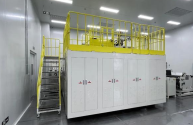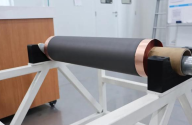China's domestically produced CJ-1000 engine will be airworthy by the end of the year, and the C919 will soon be equipped with a "domestic engine"!
The intermittent nature of the Sino-US tech war is undeniable. Given this reality, long-term reliance on external supply is untenable, and the only hope lies in domestic breakthroughs . Within China's tech industry, areas like advanced semiconductor manufacturing and aircraft engines undoubtedly face the greatest uncertainty.Recently, the domestic aviation engine sector has seen new progress. According to an interview with Chinese Academy of Engineering Academician Zhang Yanzhong on CCTV's "Lu Jian Interview" on August 1st, the domestically produced Yangtze River-1000A engine has entered the final stages of airworthiness certification and is expected to be mass-produced after certification is completed in 2025. This means that the delivery of the domestically produced CJ-1000A engine (Yangtze River-1000A) has entered the countdown phase, marking the imminent achievement of "power independence" for the domestically produced C919 large aircraft .
Furthermore, in accordance with the requirements of the Civil Aviation Administration of China (CAAC), the CJ-1000A engine will complete 317 airworthiness tests , including ground verification and flight tests , by the end of 2025. C919 installation testing will begin in 2026, with the first C919 equipped with the CJ-1000A expected to be delivered to China Eastern Airlines . The engine is expected to receive formal airworthiness certification from the CAAC in 2027, entering the mass installation phase . Full commercial operation is expected in 2028, with the goal of capturing a 15% market share for C919 engines .It is understood that the CJ1000A engine has completed 300 take-off and landing tests at plateau airports and in wet and hot conditions at sea , completed the test of single-crystal turbine blades withstanding 1800°C high-temperature gas impact , and conducted high-altitude flight tests on the Y-20 platform for verification.
View attachment 157420
The domestically produced CJ-1000A boasts a thrust of 13-18 tons, on par with the LEAP-1C . Its fuel consumption is 0.52 kg/(kgf·h),surpassing the LEAP-1C's 0.53, resulting in a 15% increase in efficiency.Furthermore,its noise and emissions control are at world-leading levels, with a design life of 20,000 hours, maintenance intervals extended to over 2,000 hours, and nitrogen oxide emissions reduced by 30% . In other words, the domestically produced CJ-1000A has surpassed the LEAP-1C in most core performance areas, and has also achieved innovations in high-temperature-resistant materials and intelligent control systems .Of course, this series of performance advances and innovations depends on the establishment of a domestic independent innovation system; more than 60 scientific research institutes and various Chinese manufacturing "hidden champions" participated in the development of the CJ-10 00A engine , such as Fushun Special Steel supplying high-temperature alloy materials, Western Superconducting providing titanium alloy materials, and Polylite fully supporting the field of 3D printing. These are all breakthroughs in key component technologies.


